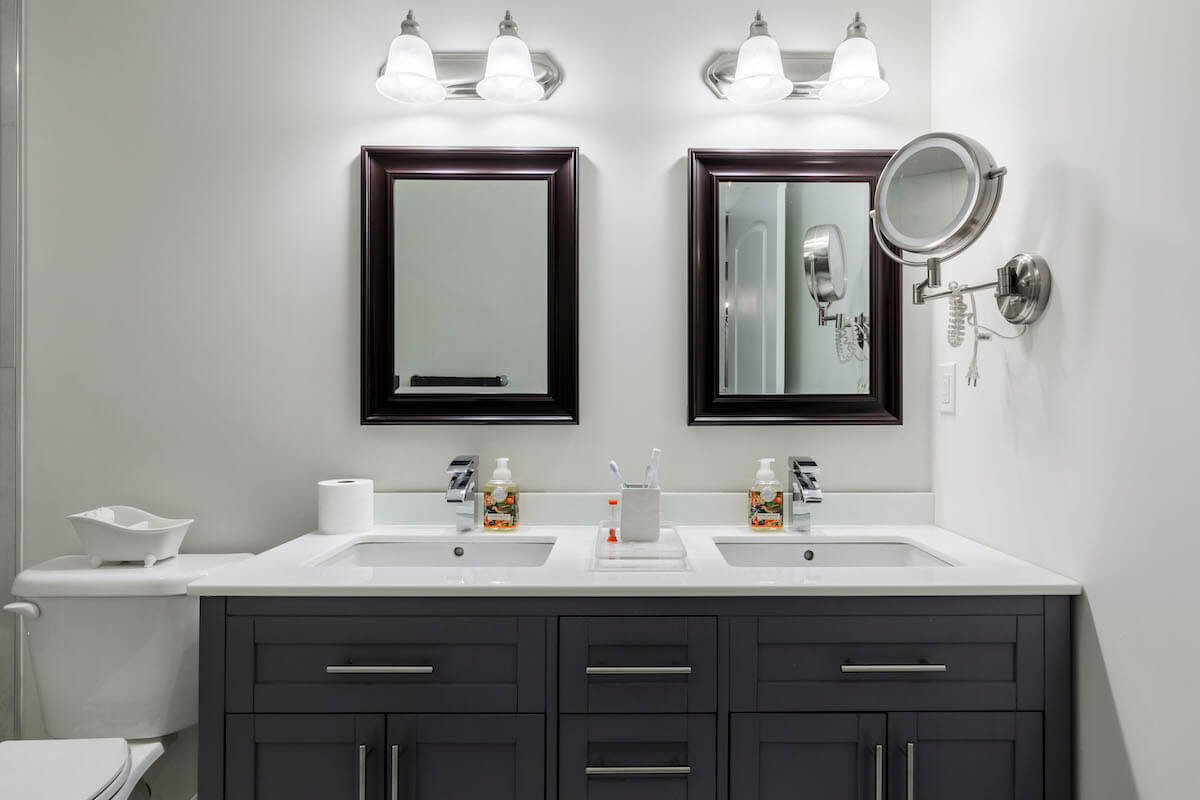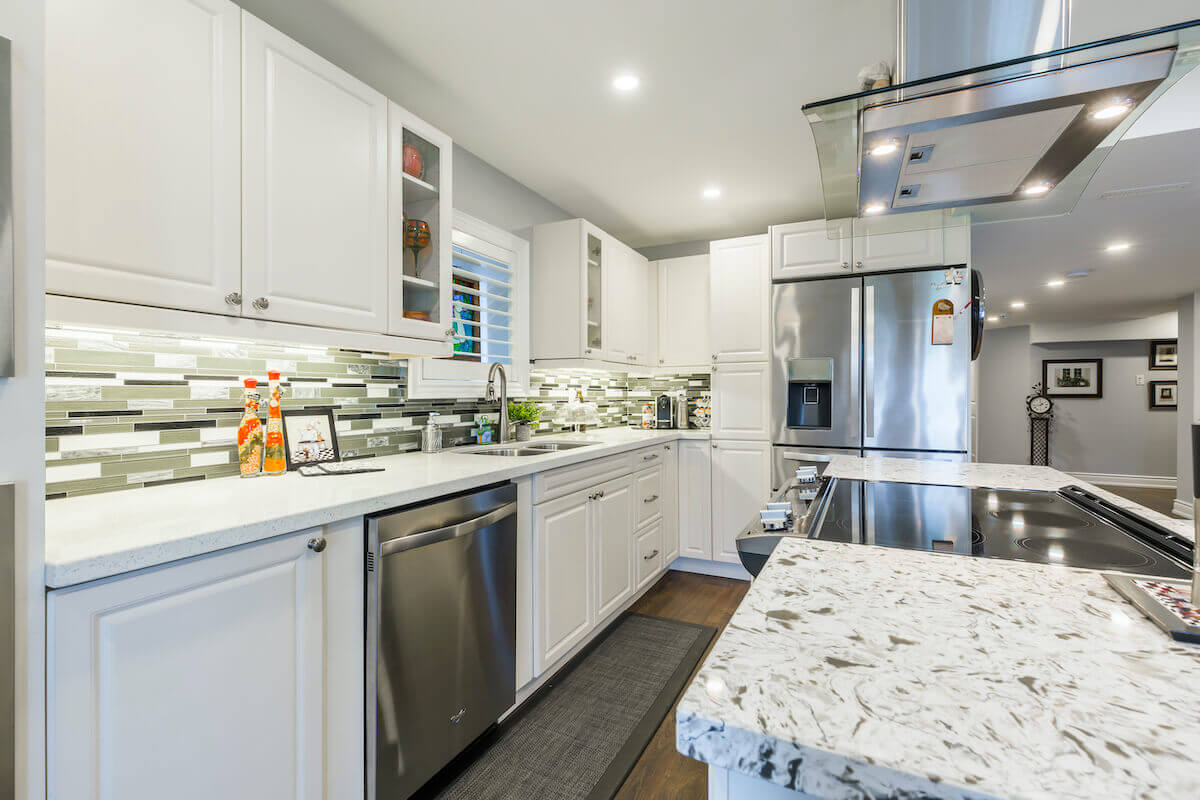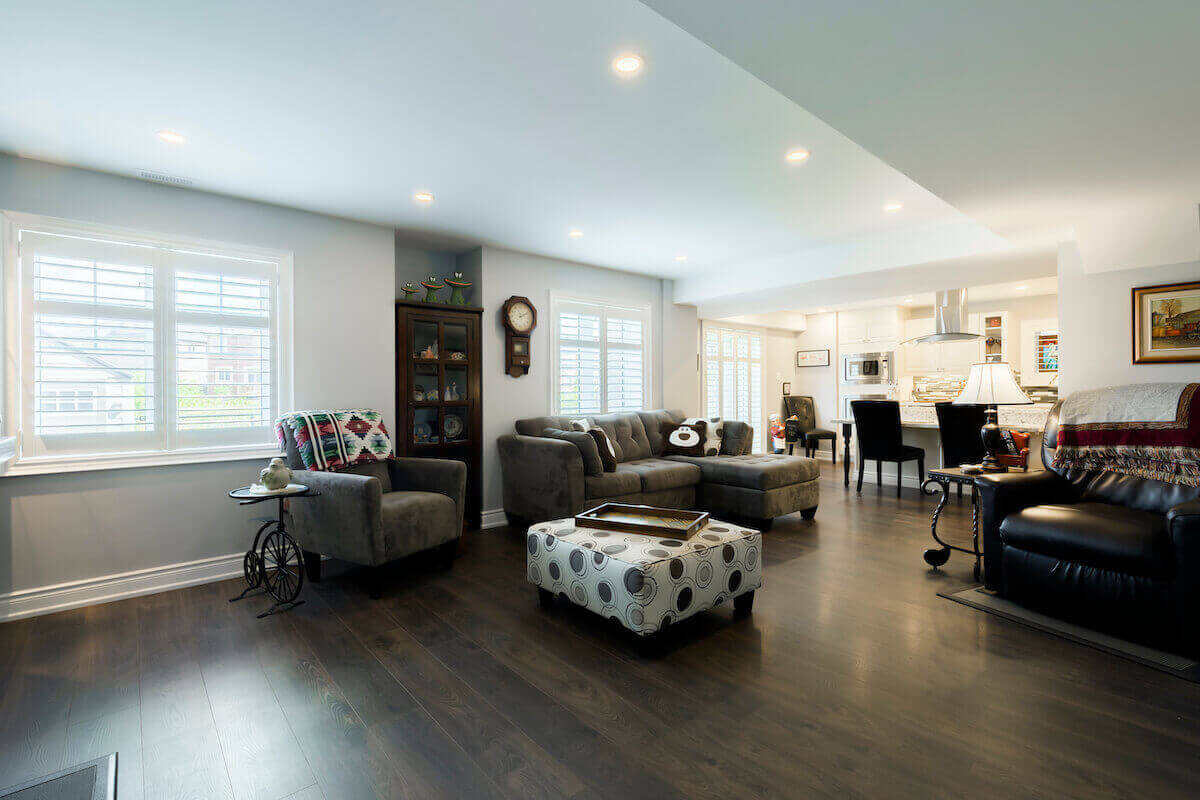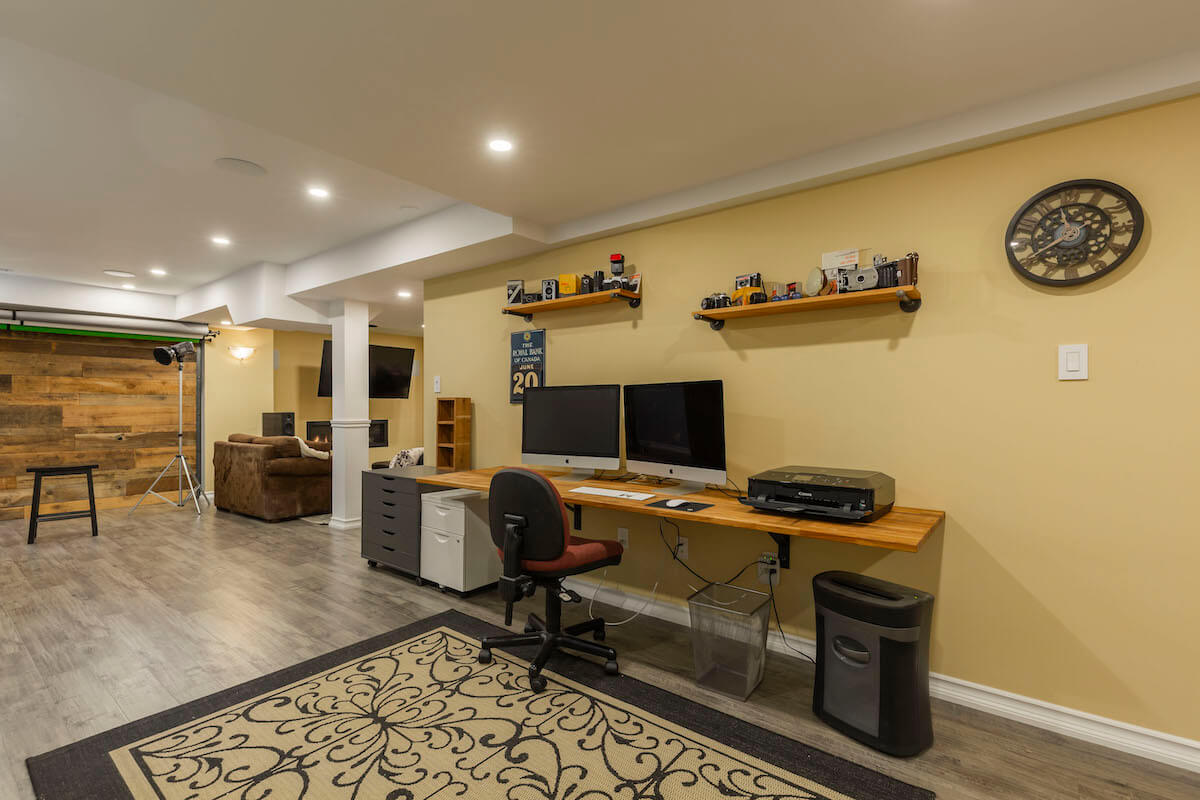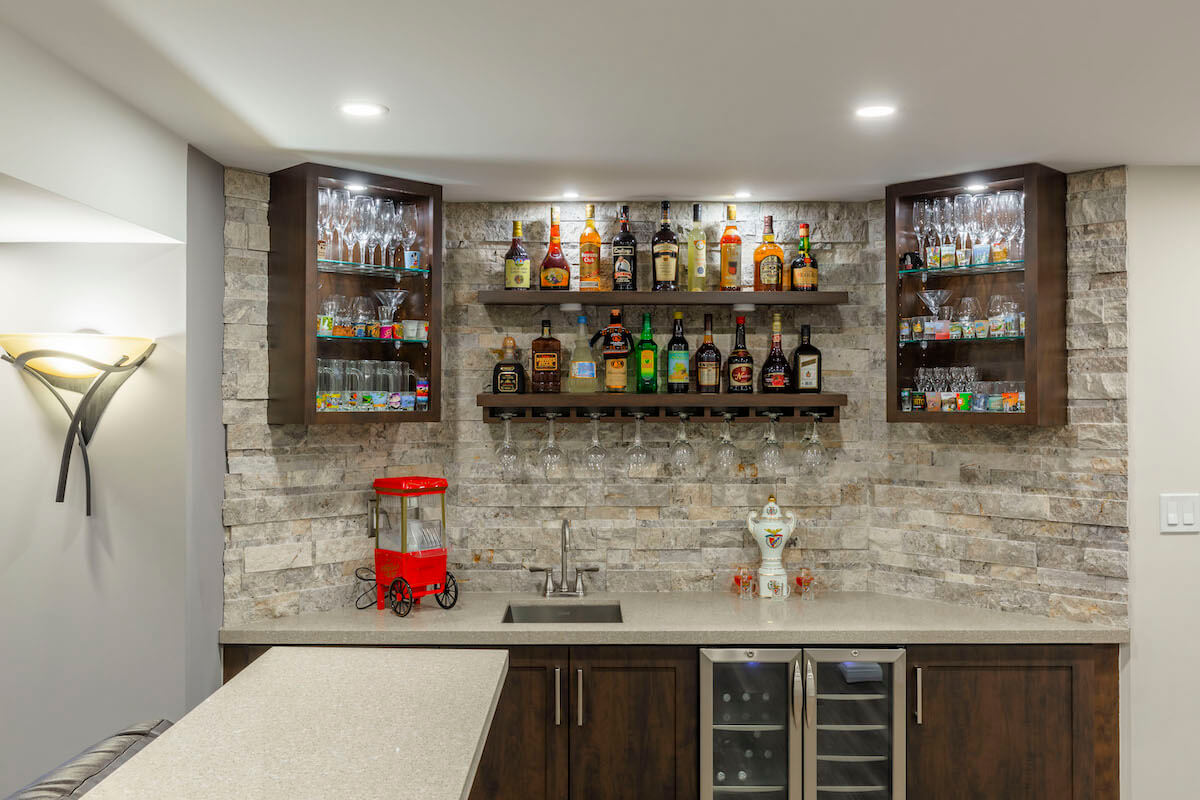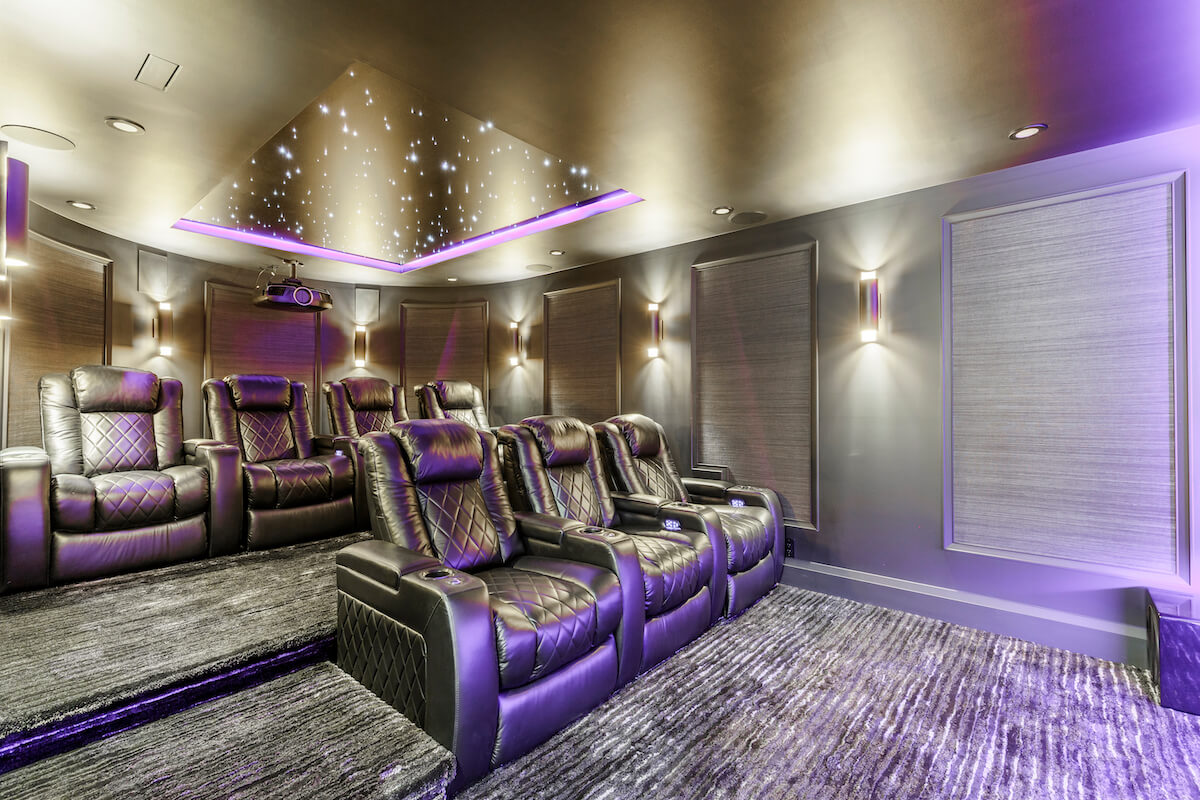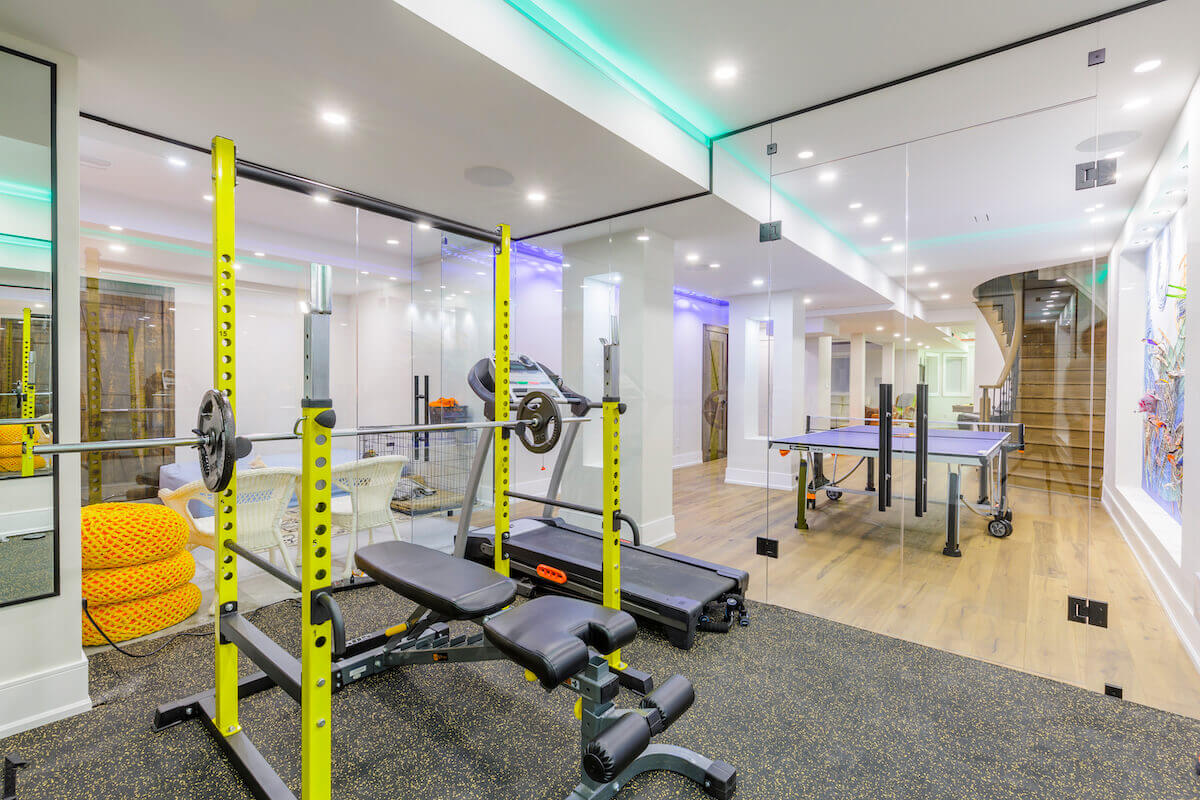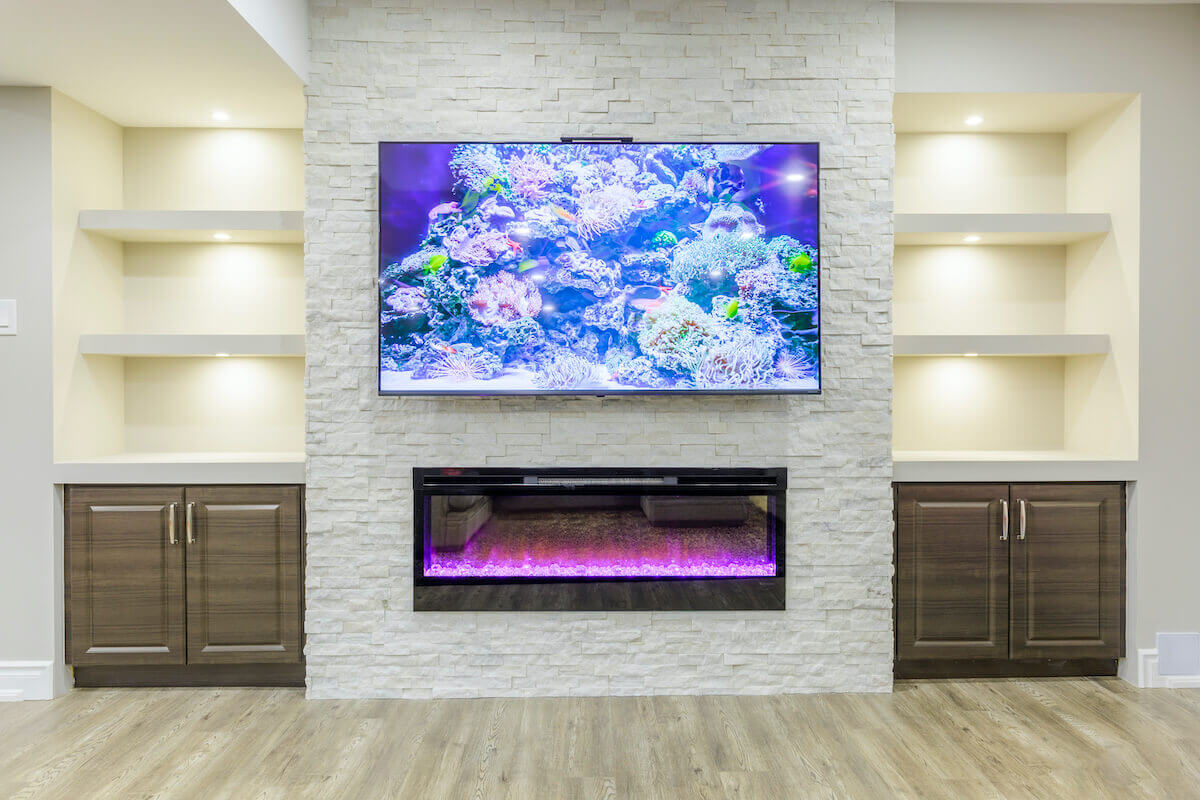
There’s nothing better than cozying up by a warm fireplace during the colder months of winter in Ontario. When it comes to your basement, you may be thinking about how to make it even warmer and more inviting when the snow starts to fall.
Fireplaces are a great way to add both warmth and value to your home, but there are a few things you need to know before installation.
FIREPLACE BASEMENT RENOVATION
One of the easiest and more profitable basement renovation ideas is the installation of a basement fireplace. It has been customary for any home to gather around a warm and cozy fireplace for many years. Installing your own fireplace in your basement makes a lot of sense. Not only will it add warmth to a cold room, but it also makes a great centrepiece for an entertaining space.
So why is it worth installing a fireplace in your basement? For starters, it’s a relatively simple installation that provides several benefits. You can use it as a source of warmth on cold winter nights or look at it as a stylistic detail that brings the room together. Either way, basement fireplaces are a must for any renovation.
Installing A Basement Fireplace
- The first thing you should do is to consult with a professional basement contractor about the installation. This is important because there are a few things you need to take into account before starting the project. For example, you need to ensure that the chimney is properly ventilated so that no fumes or smoke are coming into the room.
- You also need to consider the type of fuel you’ll be using. The most common fuel type for fireplaces is wood, but there are also gas and electric options available. Each type of fuel has its own set of pros and cons, so it’s important to choose the right one for you.
- Once you’ve chosen the type of fuel, it’s time to start the installation process. The first step is to build the foundation of the fireplace. This is usually made out of bricks or stone, but you can also use other materials like concrete or metal.
- The next step is to install the firebox, which is the part of the fireplace where the fire will be burning. After that, you’ll need to install the flue, which is the pipe that carries the smoke and fumes up and out of the room.
- Once the flue is installed, you can start building the rest of the fireplace. This includes adding finishing touches like mantels and hearths. Depending on the type of fuel you’re using, other steps may be involved in the installation process.
Gas and electric fireplaces, for example, require the installation of a gas line or an electrical outlet. Consult with a professional to make sure the installation is done properly.
Fireplace in Basement? Common Issues and Best Basement Fireplace Options
One of the most common questions we get asked is whether or not it’s a good idea to install a fireplace in the basement. The answer, like most things in life, is that it depends. There are a few things you should consider before making a decision.
Although basement fireplaces are safe and relatively easy to use, several common problems can arise.
Cold air coming from the fireplace
One common problem for fireplaces is cold drafts coming through the chimney or vent during the winter. If more cold air is coming from your fireplace than hot air, it’s time to call in the professionals.
The experts at Basement Renovation can offer a solution to this problem and help eliminate the cold draft coming into your home through your fireplace.
The smell that was coming from the fireplace
During the warm and humid months of the year, homes with wood-burning fireplaces sometimes develop an unpleasant odour. This is most likely due to creosote buildup in the chimney or vent. Creosote is a fire hazard and can be dangerous if left unattended.
If you smell a strange odour from your wood-burning fireplace, you probably need to have your chimney checked and cleaned by a certified chimney specialist.
The basement smells like smoke when you use your main floor fireplace
This happens when smoke from the upstairs fireplace enters an unused basement gas fireplace chimney. It can also happen if there are cracks or holes in the chimney liner system.
If you smell smoke in your basement while using your upstairs fireplace, call a professional to fix the problem.
Water leaks
Water leaks are sometimes difficult to stop because not all water leaks come from the roof. It is important to schedule an inspection to determine where the leak may be coming from. A fireplace in the basement is a rarely thought of but common source.
If you have a fireplace in your basement and notice any water leaks, call basement renovation services or construction professionals in your city.
Are Fireplaces Allowed in Basements?
Basement fireplaces are allowed in many parts of the country. Depending on local Homeowners Association (HOA) regulations, building codes, and local law, you may be able to install a fireplace in your basement.
It’s best to check with your local regulators before you start construction to make sure you can safely install a fireplace in your basement. It is also worth consulting with a fireplace expert to understand how a basement fireplace can be used in your home.
Some factors that may prohibit installing a fireplace in your basement are ventilation, wiring, and chimney space requirements.
Common Basement Fireplace Problems
Cold Air Coming From the Fireplace
If you find that cold air is coming into your home from the fireplace, it’s time to call in a professional. They can help seal any cracks or gaps in the fireplace to prevent cold air.
Odor Coming From Fireplace
Creosote buildup in your fireplace is most likely the source of the distasteful odour. Creosote is a fire danger and can be deadly if left unattended. You could install an electric basement fireplace, and enjoy all benefits from the fireplace with no odour.
Types of Fireplaces to Put in Basements
The type of fireplace you install in your basement will depend on several factors, including local building codes and regulations. The most common type of fireplace for basements is a gas fireplace.
Gas fireplaces are relatively easy to install and don’t require much maintenance. They’re also safer than wood-burning fireplaces because there’s no risk of creosote buildup.
If you’re not sure which type of fireplace is right for your basement, consult with basement renovation experts before deciding.
